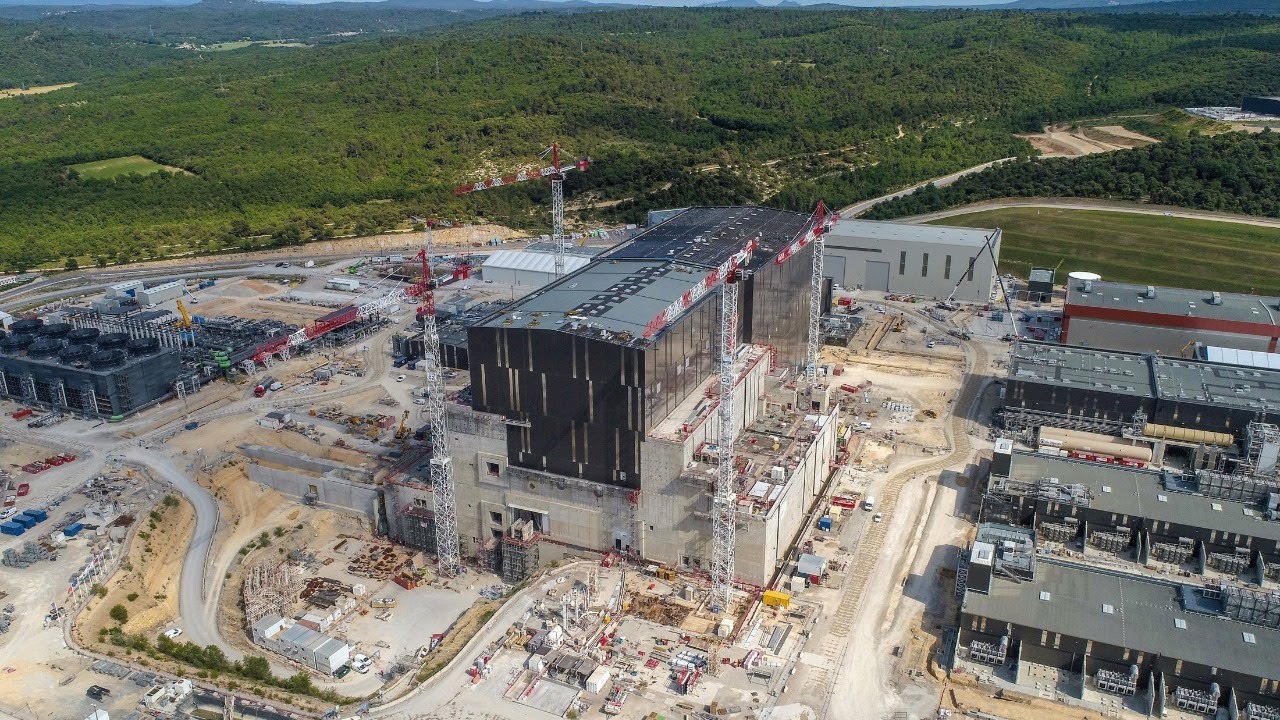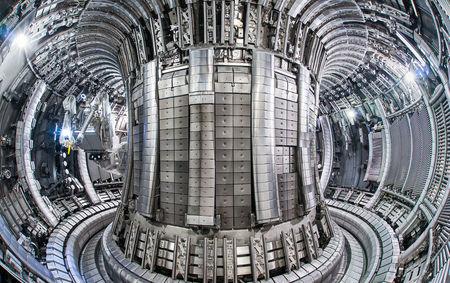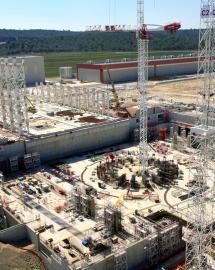Anticipate the management of future ITER waste
In Cadarache, 40km north of Aix-en-Provence, a nuclear fusion experimental facility is under construction. Its name ? ITER (1).
After over a decade of design, manufacturing and construction, the ITER device is now entering its assembly phase. Large components for the machine have been shipped from all over the world, and they are now waiting in the wings ready to be installed by the 3,000-strong assembly team.. On 26 May, the first major component of the machine was installed, making it the first of many elements that will enter the Tokamak Pit over the next few years.
Although it will be several years before it is commisioned, the principles for the management of its future radioactive waste are being defined. In 2018, the ITER Organization, the CEA and the ITER France Agency as well as Andra (2) met on the site to present the conclusions of a general review on options for managing the waste that will be produced by installation.
ITER is an international nuclear fusion research facility (see box) under construction in the South of France. Very upstream of the commissioning of this facility, discussions were initiated on how to manage the radioactive waste that will be produced there. The first contacts with Andra, in charge of the management of French radioactive waste, were initiated in 2007 and led, in 2016, to the signing of an agreement between the Agency and ITER Organization to carry out the necessary studies in radioactive waste management.
The recent start of assembly is an occasion to look at how the ITER waste, with its specific characteristices, will be managed, and eventually, disposed of at an Andra facility.
.
Different categories of waste
"The waste produced by ITER will initially be of very low activity, then becomes more active as the reactor ramps up," explains Robert Mandoki, who is leading discussions on this subject at Andra. It will therefore be necessary to manage different categories of waste over time: very low activity waste (VLL), then low and intermediate short-lived activity (FMA-VC), and finally long-lived medium activity (IL-VL) . "The first phase of the work therefore consisted for Andra in evaluating the management strategy for the different waste types, as proposed by ITER. A series of recommendations were issued, so that future waste can be accepted by the appropriate Andra disposal facilities.

Confining tritium
The future ITER waste will have one major characteristic: it will be loaded with tritium, a highly mobile radioelement. "The tritium concentration is evaluated against a criterion (a limit value) for accepting waste in our various disposal facilities," says Robert Mandoki. The ITER Organization has already planned waste treatment processes that will reduce the tritium content, or even recover some of this tritium so that it can be reused as fuel. "
For its part, Andra has made various recommendations, for example the development of innovative disposal containers that would better confine tritium. At the same time, it supports several research projects such as the MACH 3 project, funded by the "Investments for the future" program. Initiated in 2017, in partnership with other research organizations, in particular the CEA, this project aims to study containers with tritium "trappers". Another project supported by Andra: VALOFUSION, which is interested in a treatment process for highly tritiated metal waste. Finally, the European TRANSAT program aims to further increase technical knowledge on the behavior of tritium in order to reduce its impact on the environment.
(1) International Thermonuclear Experimental Reactor
(2) ITER Organization is the owner and future operator of the facility; the CEA is the "host organization" of the ITER project; the ITER France Agency is an administrative and budgetary autonomous entity, created by interministerial decree within the CEA, to implement the commitments made by France in the ITER project as the host state; in particular, Agence ITER France is piloting the establishment of a network for handling tritiated waste from the ITER facility, in cooperation with Andra, and will be responsible for the project management of the construction of a nuclear decay installation intended to accommodate this tritiated waste from ITER as well as that resulting from civil activities carried out in France using tritium. It is also currently expected that the CEA / Agence ITER France will be in charge of the dismantling operations of the ITER base nuclear installation on the basis of specific contributions from international partners, collected by the ITER Organization.
What is ITER?
ITER is a research facility project under construction in France, in Cadarache, The project is an international collaboration between Russia, China, South Korea, the United States, Japan, India and the European Union.
Designed to demonstrate the scientific and technological feasibility of fusion energy, ITER will be the largest experimental facility of its kind. Fusion is the source of energy from the sun and the stars: when the nuclei of light atoms merge to form heavier nuclei, a large amount of energy is released. Fusion research aims to harness this source of energy.

To find out more about ITER: www.iter.org


